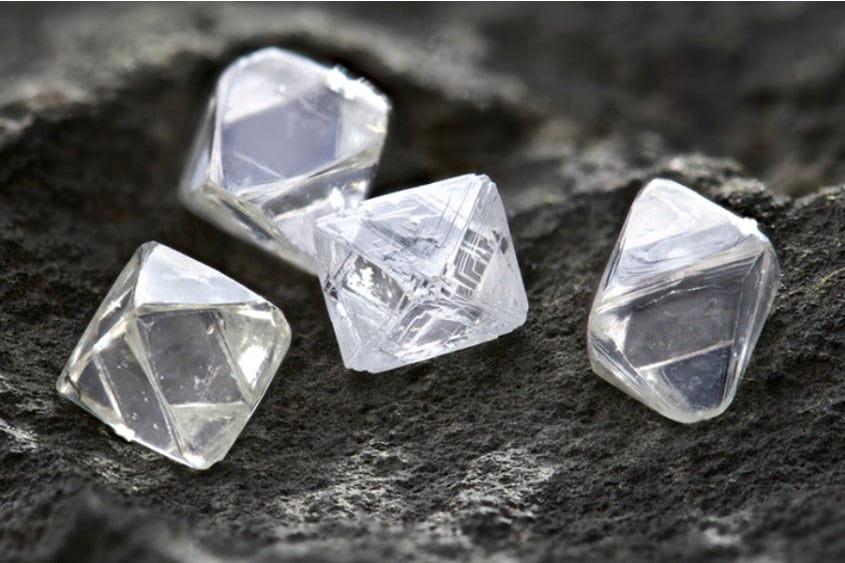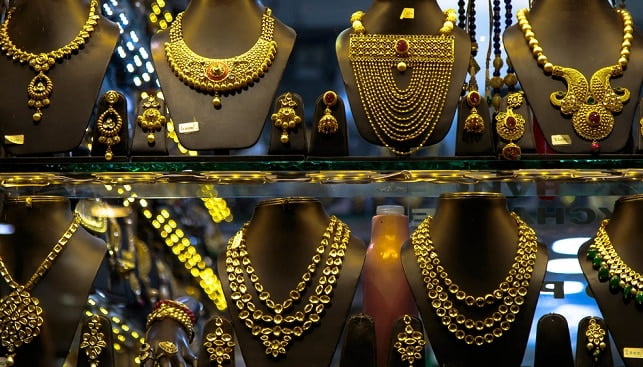In a shift of global trends, India is set to take the international spotlight as the dominant force in diamond demand by 2024, according to David Kellie, CEO of the Natural Diamond Council (NDC). This shift in dynamics comes as word of US consumers veering towards lab-grown alternatives continues to gather momentum. Kellie attributes this anticipated surge to India’s robust economic standing coupled with evolving demographics, particularly noting the financial empowerment of women in India as a driving force. He also points to an expanding gap between natural and lab-grown diamonds, marked by an 80-90% price disparity, and the dwindling supply of natural diamonds due to the absence of new mining projects.
1. Overview of the Indian Diamond Market
You may have noticed a significant buzz surrounding the Indian diamond market, and there’s a good reason for that. It’s becoming one of the most sought-after sectors for diamond trading worldwide. Numerous factors contribute to its robustness, some of which include impressive economic growth, a burgeoning middle class, and a deep-seated cultural affinity for diamonds.
Factors contributing to the market strength
The strength of the Indian diamond market can be accredited to several factors. First, the Indian economy’s rapid expansion has led to an increase in disposable income, especially among the middle class. Moreover, considering the deep-rooted tradition of diamond gifting in the Indian culture, the disposable income is often spent on purchasing diamonds. Other factors include favorable demographic trends, with a large proportion of the population falling into the marriageable age group, and increasing urbanization.
Historical context and evolution
Historically, India has long been a global hub for diamond cutting and polishing. This tradition dates back to the 14th century when most of the world’s diamonds were sourced from India. Over the years, the Indian market has evolved and grown more sophisticated, adapting to global trends and demands.
Understanding the purchasing behavior in the Indian market
Understanding the purchasing behavior in the Indian market is crucial when analyzing market dynamics. Diamonds are not just considered a fashion accessory or a luxury item in India; they hold a significant cultural and emotional value. The purchase decision often revolves around these sentiments, along with the price and quality of diamonds.
2. Potential Diamond Demand by India
The diamond demand in India is projected to rise significantly in the coming years.
Projected growth of diamond demand in India
According to David Kellie, CEO of the Natural Diamond Council (NDC), India is poised to be at the forefront of the global demand for diamonds by 2024. This prediction aligns with India’s robust economic situation and shifting demographics.
Economic indicators supporting the demand growth
The growth in India’s financial position, coupled with changing demographics, is driving this anticipated demand shift. The increasing economic power of Indian women is also a critical factor pushing this growth.
Comparison with diamond demand in other global markets
In contrast to the US market, India is witnessing increased demand for natural diamonds. Many American consumers are turning towards lab-grown alternatives due to their lower prices, which is causing a change in their purchasing preference.

3. The Influence of the Indian Women’s Economic Status
The changing dynamics of women’s economic status in India play a vital role in the Indian diamond market.
The shift in economic power to women in India
Indian women are becoming financially stronger, which is contributing to the surge in diamond demand. As they become more financially independent, they are choosing to invest in high-quality diamonds, either as a personal accessory or as a secure investment.
Impact of Indian women on diamond purchase
As per David Kellie’s views, financial empowerment has allowed Indian women to drive the demand for diamonds in the country. They are not only buying diamonds for personal use, but they also actively participate in the selection process, even when the diamonds are bought as a gift.
Role of societal changes in increasing demand
Societal changes, such as increased women’s participation in the workforce and the delay in marriage age, have further augmented diamond demand. As women earn and manage their finances, their purchasing power increases, reflected in their diamond-buying behavior.
4. Natural Diamonds vs. lab-grown Alternatives
An evident divide is growing between natural diamonds and their lab-grown counterparts.
Understanding the growing divide between natural and lab-grown diamonds
This divide is primarily due to the price discrepancy between the two categories; lab-grown diamonds typically retail for 80%-90% less than natural diamonds. Factor in the increasing scarcity of natural diamonds, with no new mines on the horizon, and the divide becomes even more apparent.
Price disparity and its influence on consumer preference
The substantial price disparity between natural and lab-grown diamonds has started to influence consumers’ preferences. Particularly in markets like the US, customers have been opting for the economically friendlier lab-grown alternative. However, in traditional markets like India, the tendency still leans towards natural diamonds, largely due to their cultural and emotional significance.
Factors contributing to scarcity of natural diamonds
The scarcity of natural diamonds is attributed to the lack of new mines, which puts a cap on the supply. Consumers’ increased focus on sustainability could also play a role in the future as mining procedures often face criticism for their environmental impact.

5. Market Dynamics of the Diamond Industry in India
For an in-depth understanding, let’s now analyze some key aspects of the Indian diamond industry.
Detailed analysis of the cut and polished diamond imports
India’s dominance in diamond cutting and polishing is reflected in the sector’s performance. Recent data showed an impressive 148.5% year-on-year growth in the import of cut and polished diamonds, despite a global slowdown.
Insights on the exports of cut and polished diamonds
Despite robust domestic demand, India’s gross export of cut and polished diamonds witnessed a decline of 32% on a year-on-year basis as of December 2023. This drop could be a result of multiple factors such as reduced global demand, geopolitical tensions, or even internal policy changes.
Impact of declining diamond exports on market
The decline in diamond exports has cast a shadow over the Indian market. However, strong domestic demand is expected to cushion any major negative impact. Additionally, the industry hopes for a rebound in exports as global markets recover.
6. Gold and Diamond Jewelry Market in India
Diamonds and gold are integral parts of Indian traditions.
Comparison between gold and diamond jewelry demand
While gold has always maintained a deep cultural importance in India, diamond jewelry has carved its niche over time. Although gold jewelry continues to lead the market, diamonds are increasingly becoming a favorite choice for many consumers.
Changes in market trends over the years
Over the years, the Indian market has undergone a myriad of changes. Consumers now want more than just the ability to show off wealth; they are seeking unique and personalized jewelry items that make a statement. Consequently, we are witnessing a shift towards diamond jewelry that comes in unique designs and settings.
Influence of cultural aspects on jewelry purchase
Cultural aspects still play a crucial role in jewelry purchases in India. Apart from being valued for their beauty and magnificence, diamonds are often equated with divine power and protection. These cultural beliefs, combined with the tradition of gifting jewelry during weddings and other important events, further drive the demand.

7. Industry Challenges and Opportunities
While promising, the Indian diamond market also faces certain challenges. However, these challenges often come hand-in-hand with exciting new opportunities.
Identifying potential roadblocks in the Indian diamond market
Some potential roadblocks include the increasing popularity of lab-grown diamonds and risk of decreased export owing to global economic fluctuations. Another challenge could be changing consumer preferences, requiring businesses to adapt quickly to maintain brand relevance.
Exploring opportunities for growth and expansion
Despite these challenges, there are immense opportunities for growth and expansion. For instance, focusing on innovations in diamond design and marketing to cater to evolving consumer tastes could prove fruitful. The growing purchasing power of women also presents a prosperous opportunity to cater to this target group with tailored product offerings.
Impact of global industry trends on the Indian market
Global trends, such as a push towards more ethical and sustainable practices, have started influencing the Indian diamond market. Companies that adapt to these shifts and remain transparent about their ethical practices will likely gain a competitive edge.
8. Role of the Gem & Jewellery Export Promotion Council of India (GJEPC)
The GJEPC plays a pivotal role in promoting diamonds and the wider gem and jewelry sector in India and handling challenges that arise along the way.
Understanding the role of GJEPC in promoting diamonds
Established in 1966, the GJEPC has successfully championed the cause of the Indian diamond industry on the global stage. It has been instrumental in promoting and facilitating exports, thereby contributing to the sector’s growth.
Key initiatives by GJEPC to boost exports
GJEPC has initiated several programs to boost exports, such as organizing international trade shows and exhibitions. These platforms help Indian businesses showcase their products to a global audience, fostering relationships and opening doors to new avenues.
GJEPC’s strategies in dealing with market challenges
The council has been proactive in dealing with any hurdles that obstruct the industry’s growth. It continuously works with the government to ensure favorable policies for traders and manufacturers, ensuring the industry’s resilience in the face of challenges.

9. Future Projections for the Indian Diamond Market
The Indian diamond market holds immense potential and is predicted to be a driving force on the global stage in the coming years.
Predicting the growth of the diamond market in India
Given the recent trends and market dynamics, experts predict that India’s diamond market will continue to expand. They expect a strong demand stemming from a booming economy, lifestyle changes, and a growing fondness for diamonds.
Potential market trends to watch out for
Keeping a close eye on certain trends will be fruitful for anyone involved in this industry. These include advancements in diamond jewelry design, the growing prominence of ethically sourced diamonds, the rise of e-commerce in jewelry sales, and a greater marketing focus on women consumers.
Guidance for investors and diamond traders
For investors and diamond traders, the Indian diamond market offers a sea of opportunities. It’s crucial to understand the unique dynamics of the Indian market, respect the cultural significance of diamonds, and leverage the rising economic power of women. Watching global trends and adapting quickly can be key to success in this vibrant market.
10. The Influence of the Kimberley Process on the Indian Diamond Market
A discussion about the diamond market wouldn’t be complete without mentioning the Kimberley Process.
Understanding the Kimberley Process
The Kimberley Process is an international certification scheme aimed at preventing the trade of conflict diamonds. It’s a cooperative effort among governments, industry players, and civil societies, ensuring consumers that the diamonds they buy are conflict-free.
Impact of the Kimberley Process on Indian imports and exports
The Kimberley Process has had a profound impact on India’s diamond imports and exports. Being a crucial part of the diamond supply chain, India adheres strictly to the Kimberley Process, adding a layer of integrity and transparency to its diamond trade.
Future implications of the Kimberley Process for the Indian market
Looking forward, the Kimberley Process will continue to influence the Indian diamond market. Compliance with the Kimberley Process ensures responsible sourcing practices, which is expected to become even more noteworthy as consumers increasingly value ethical and sustainable products.
In conclusion, the Indian diamond market is a dynamic and vibrant venue that offers immense potential. Though it faces certain challenges, the market’s strength, combined with economic growth, changing consumer preferences, and progressive societal shifts, promises a bright future. It’s an exciting time to partake in India’s diamond story, whether you’re an investor, retailer, or consumer.

